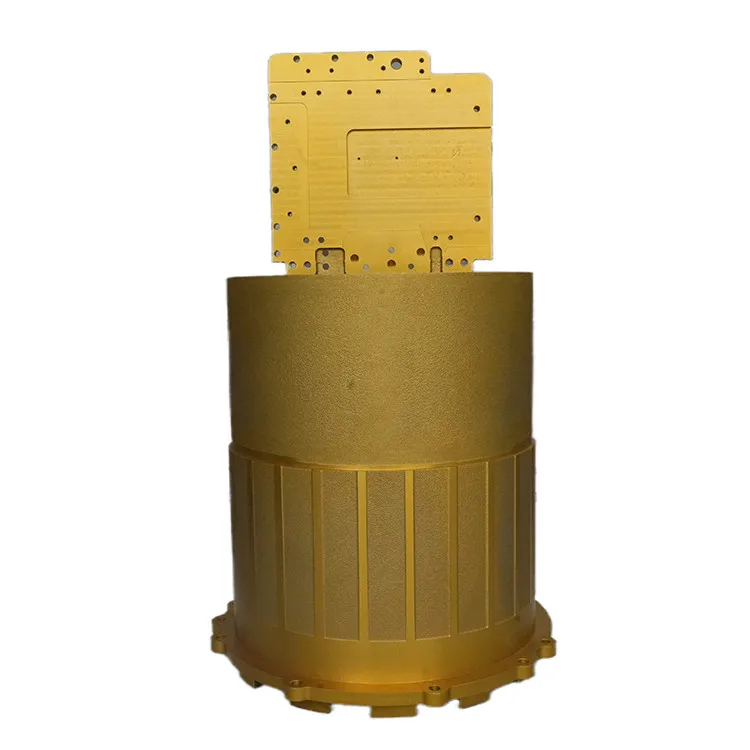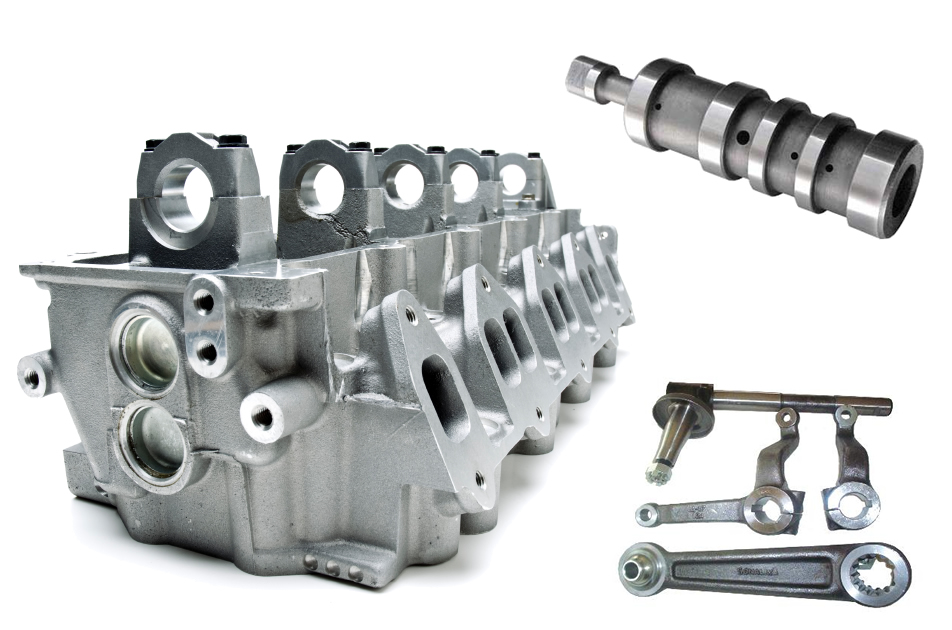The role of an Aluminum Foundry in aerospace production processes
Wiki Article
Exploring the Ingenious Processes Behind Modern Light Weight Aluminum Foundry Procedures
Modern light weight aluminum shop operations are undertaking significant transformation. Automation and AI are reshaping production approaches, boosting both effectiveness and accuracy. The combination of 3D printing is improving mold creation, while sustainability practices are coming to be much more essential. Each of these developments plays a key role in redefining the market. Nevertheless, the ramifications of these changes expand beyond simple production performance. What obstacles and opportunities lie in advance for aluminum foundries in this evolving landscape?The Role of Automation in Aluminum Foundries

Automation adds to improved safety criteria within the factory environment. By moving harmful tasks to equipments, human workers can concentrate on managerial functions and quality control, minimizing the risk of crashes. Additionally, information analytics stemmed from automated processes provide beneficial understandings into functional performance, resulting in far better decision-making and continual improvement. As the need for light weight aluminum products grows, the adoption of automation modern technologies will likely increase, better changing the landscape of light weight aluminum foundry procedures.
Innovations in Spreading Technologies
Recent developments in casting technologies are changing aluminum factory procedures. Technologies such as 3D printing combination, progressed alloy formulas, and automated procedure optimization are improving efficiency and item quality. These growths are crucial in satisfying the evolving needs of the industry.3D Printing Combination
Incorporating 3D printing innovation right into light weight aluminum foundry procedures has changed conventional spreading approaches, boosting both effectiveness and accuracy. This cutting-edge strategy permits the quick manufacturing of complex molds and cores, significantly decreasing preparations and material waste. By utilizing additive manufacturing, factories can produce complex geometries that were difficult or formerly tough to achieve with traditional strategies. The adaptability of 3D printing also allows quick design adjustments, cultivating an extra dexterous manufacturing procedure. In enhancement, this combination sustains making use of lightweight frameworks, which is significantly essential in markets such as vehicle and aerospace. As light weight aluminum factories remain to adopt 3D printing, they position themselves at the forefront of technological development, driving enhancements in product top quality and operational capabilities.Advanced Alloy Formulations
The development of advanced alloy formulations has actually greatly improved casting innovations in aluminum foundry operations. These solutions incorporate different elements, such as magnesium, silicon, and copper, to improve mechanical residential or commercial properties and thermal resistance. By tailoring the structure of light weight aluminum alloys, suppliers can accomplish particular efficiency qualities that meet the needs of varied applications, from automobile parts to aerospace structures. Making use of innovative alloys likewise adds to minimized weight and enhanced stamina, which are vital consider modern-day design. Furthermore, developments in alloy advancement make it possible for much better fluidity during casting, resulting in enhanced surface area finishes and minimized defects. Generally, progressed alloy formulas stand for a substantial leap onward, placing light weight aluminum factories to fulfill the progressing requirements of different sectors effectively.Automated Refine Optimization
Improvements in casting innovations have actually led the way for automated process enhancement in light weight aluminum shop procedures. By incorporating sophisticated software and real-time data analytics, factories can currently enhance manufacturing processes and improve top quality control. Automated systems monitor variables such as pressure, air conditioning, and temperature level rates, permitting prompt adjustments that reduce flaws and waste. In addition, artificial intelligence formulas assess historical efficiency data to anticipate optimal setups, thus enhancing effectiveness and minimizing cycle times. Robotics likewise play a substantial function, managing repeated tasks that boost safety and security and accuracy. Generally, these technologies not just drive functional performance yet additionally make it possible for foundries to meet the expanding demand for high-quality aluminum elements in various industries.Smart Manufacturing and Sector 4.0 Integration
The integration of Smart Production and Market 4.0 within light weight aluminum factories is transforming operational performance. By leveraging IoT modern technologies, automation, and robotics, foundries can maximize manufacturing processes and reduce downtime. In addition, information analytics offers important understandings that improve decision-making and drive continuous improvement.IoT in Shop Workflow
As suppliers significantly accept the Net of Things (IoT), factory operations are experiencing a transformative change towards wise manufacturing and Industry 4.0 combination. Precision aluminum casting. IoT modern technologies allow real-time information collection and analysis, improving decision-making processes and operational effectiveness. Sensors and linked gadgets keep track of devices efficiency, material use, and ecological problems, allowing for positive upkeep and source optimization. This connectivity promotes an extra nimble manufacturing environment, where modifications can be made swiftly in response to market demands. Furthermore, IoT helps with boosted traceability and quality assurance, as data from the whole production cycle can be quickly accessed and analyzed. In general, the assimilation of IoT in foundry procedures considerably improves productivity and drives development in aluminum production processesAutomation and Robotics Assimilation
Automation and robotics assimilation is revolutionizing aluminum foundry procedures by enhancing performance and precision. This transformative method simplifies processes such as molding, pouring, and completing, minimizing human error and boosting result consistency. By employing sophisticated robot systems, shops can accomplish greater manufacturing prices while maintaining stringent top quality standards. Automated systems likewise make it possible for real-time tracking and adaptive control, enabling quick changes to manufacturing criteria. In enhancement, the combination of robotics lessens labor prices and mitigates safety threats connected with manual handling of molten steel. As foundries embrace clever production concepts inherent in Industry 4.0, the synergy between automation and robotics solidifies their one-upmanship, leading the way go now for lasting development and innovation in the light weight aluminum casting field.Information Analytics for Efficiency
Utilizing information analytics greatly enhances effectiveness within light weight aluminum factory operations, straightening with wise production and Market 4.0 concepts. By leveraging real-time data collection and evaluation, factories can keep track of manufacturing procedures, anticipate equipment failings, and enhance resource allocation. This data-driven method facilitates informative decision-making, making it possible for supervisors to boost and recognize traffic jams operations. Furthermore, anticipating analytics empowers shops to expect market needs, thus reducing waste and ensuring prompt item delivery. Assimilation of data analytics with IoT gadgets enhances operational presence, cultivating an aggressive maintenance culture. Inevitably, executing these sophisticated logical strategies not only enhances productivity yet also drives advancement, placing aluminum foundries to meet the progressing needs of the industry while maintaining affordable sides in a swiftly altering landscape.Sustainable Practices in Light Weight Aluminum Spreading
While the light weight aluminum casting sector has commonly encountered environmental challenges, many foundries are currently adopting lasting methods to reduce content their impact (Aluminum Casting Company). A considerable focus has been on recycling aluminum scrap, which not just decreases waste but additionally preserves energy compared to main aluminum manufacturing. Cutting-edge melting technologies, such as induction heaters, improve energy effectiveness and lower greenhouse gas dischargesIn addition, shops are carrying out closed-loop water systems to lessen water intake and decrease thermal contamination. Making use of eco-friendly binders in mold-making procedures is gaining grip, additional decreasing dangerous exhausts.
Some centers are investing in renewable power resources to power procedures, lining up with global sustainability objectives. By integrating these methods, the light weight aluminum casting industry is progressing toward an extra environmentally responsible future, demonstrating that financial development can exist together with ecological stewardship - Precision aluminum casting. These initiatives mirror a dedication to sustainability and the relevance of environmental accountability in production
Quality Assurance Innovations
visit the website As the light weight aluminum spreading sector advancements towards sustainability, the importance of quality assurance advancements comes to be increasingly evident. Modern aluminum factories are embracing sophisticated technologies to enhance their high quality assurance processes. Methods such as real-time monitoring and data analytics permit makers to detect inconsistencies and issues early in the manufacturing cycle. Applying automatic evaluation systems furnished with device finding out formulas guarantees that items meet stringent top quality criteria while lessening human mistake.The integration of non-destructive screening techniques, such as radiographic and ultrasonic evaluations, provides much deeper understandings into the honesty of spreadings without damaging the material. These innovations not only improve product reliability yet also reduce waste, lining up with sustainability goals. Furthermore, the fostering of standard high quality frameworks helps improve operations throughout various shops, guaranteeing consistency in outcome. Collectively, these improvements are improving quality assurance, promoting a society of excellence within the aluminum spreading field.
Future Patterns in Light Weight Aluminum Shop Operations
What developments lie in advance for aluminum shop procedures? The future of light weight aluminum factories is positioned for improvement via innovations in automation, expert system, and sustainable techniques. The assimilation of robotics and automated systems is anticipated to enhance efficiency and precision in the casting processes, decreasing human error and labor expenses. Additionally, AI-driven analytics will make it possible for real-time tracking and predictive maintenance, enhancing functional efficiency and lessening downtime.Sustainability stays a focal factor, with foundries increasingly embracing eco-friendly methods, such as making use of recycled aluminum and developing low-emission melting modern technologies. Innovations in 3D printing are likewise expected to change mold-making, permitting complex geometries and minimized product waste. As the sector welcomes digitalization, data-driven decision-making will certainly end up being pivotal, allowing shops to react swiftly to market demands. Jointly, these fads promise to redefine aluminum shop procedures, making them extra reliable, lasting, and versatile to future difficulties.

Frequently Asked Inquiries
What Safety Procedures Are Applied in Aluminum Factory Workflow?
Light weight aluminum factory operations carry out numerous safety measures, consisting of individual protective equipment, ventilation systems to handle fumes, normal security training, emergency reaction plans, and stringent surveillance of temperature level and tools to avoid mishaps and assurance employee security.Just How Do Shops Take Care Of Workforce Educating for New Technologies?

What Materials Are Frequently Reused in Light Weight Aluminum Foundries?
Aluminum factories typically recycle scrap light weight aluminum, including post-consumer products like beverage cans, automobile components, and building and construction products. This recycling procedure reduces waste and saves resources, adding to an extra sustainable aluminum manufacturing industry.Exactly How Does Light Weight Aluminum Spreading Impact the Atmosphere?
Light weight aluminum casting impacts the environment via energy-intensive processes, greenhouse gas discharges, and potential local pollution. Improvements in reusing and sustainable practices can minimize these results, advertising a more green approach to light weight aluminum manufacturing.What Are the Normal Lead Times for Light Weight Aluminum Spreading Projects?
Common preparation for light weight aluminum spreading jobs differ substantially, usually ranging from 2 to six weeks. Aspects affecting these timelines include complexity, order dimension, and product availability, affecting overall manufacturing routines in foundry operations.
Automation increasingly plays an important function in aluminum factories, boosting performance and precision in the production process. Innovations in casting modern technologies have paved the way for automatic process enhancement in light weight aluminum factory procedures. Taking advantage of information analytics considerably enhances effectiveness within light weight aluminum factory operations, straightening with wise production and Industry 4.0 principles. A considerable focus has actually been on recycling aluminum scrap, which not only minimizes waste however additionally saves power contrasted to main aluminum production. Aluminum foundries commonly reuse scrap light weight aluminum, consisting of post-consumer items like beverage containers, auto parts, and building products.
Report this wiki page